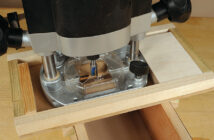Willow Christmas Decorations:
Peter Wood makes a trio of simple Christmas decorations.

Peter Wood makes a trio of simple Christmas decorations
Christmas is just around the corner and now is the time to be thinking of making some decorations for the Christmas tree, and to sell at the craft fairs I attend in the run up to the holiday. The willow (Salix spp.) I’ll be using is from the Somerset levels. There are plenty of suppliers around the country, but the main growing area is in Somerset – some suppliers have been growing here for hundreds of years (see suppliers list – overleaf). There are many different varieties of willow, some are fast growing (4m in a year!), others give fine thin rods and there are a multitude of different colours, which adds great interest to your weaving.
Different types of willow
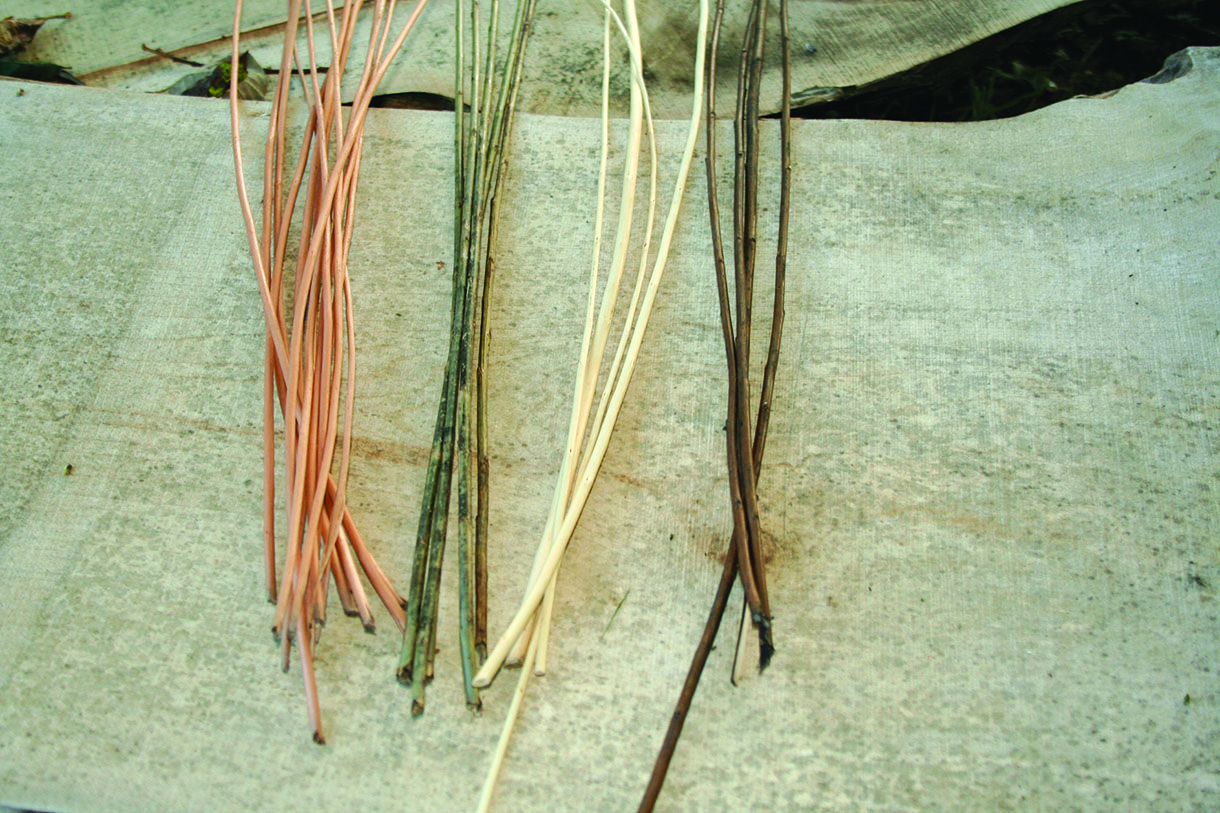
Willow can be bought online and delivered ‘to the door’
Brown willow
Brown willow is simply willow with the bark left on. Its colour depends on the variety of willow you buy;
this can range from reds and purples, to yellow and greens.
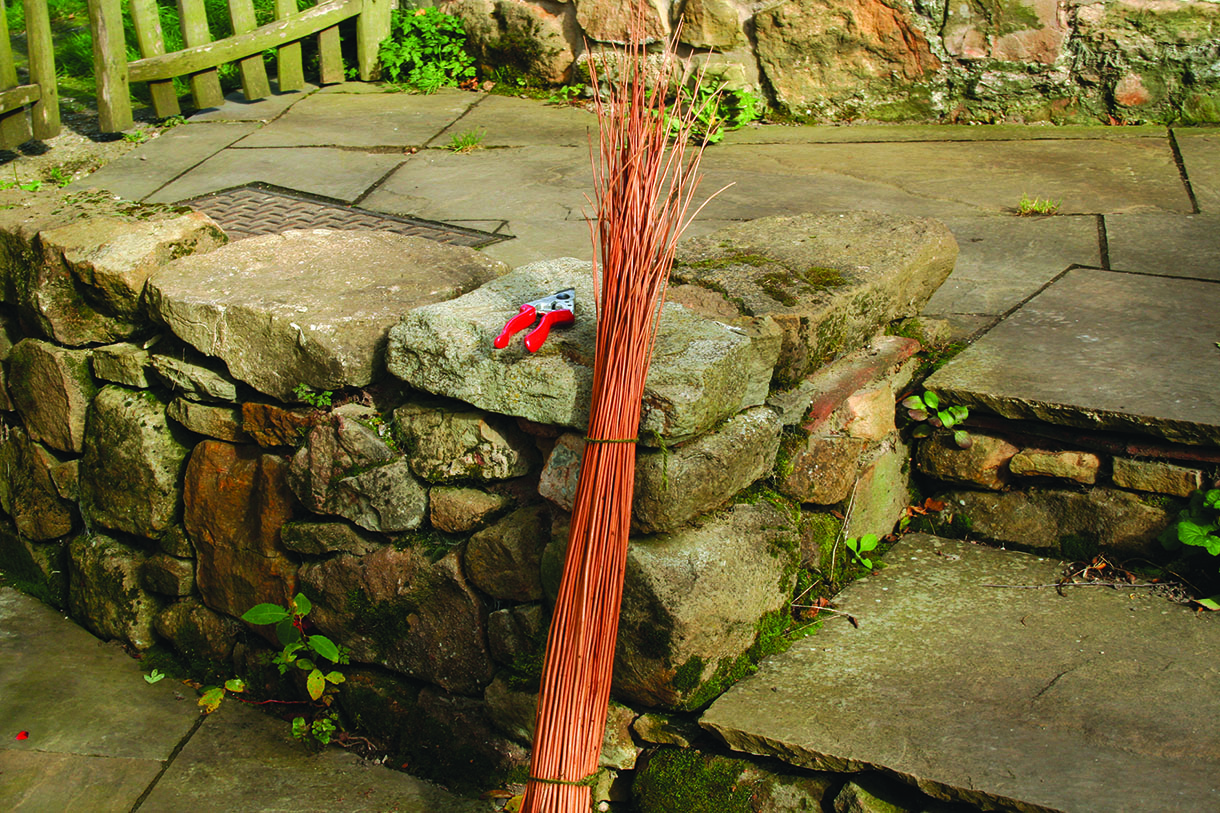
Brown willow
Buff willow
Buff willow is where the willow has been harvested then boiled for up to eight hours. This allows the tannin
to penetrate the willow and softens the bark, which is then stripped using a stripping machine.
Steamed willow
Steamed willow, as the name suggests, has been steamed with the bark on for a few hours then dried. The bark dries to a shiny, almost black colour.
White willow
White willow has been cut over winter then ‘pitted’ (stood in pits of water), which keeps it alive until the buds break in spring. The bark is then stripped or peeled off and left to dry, producing a high quality creamy white rod.
Green willow
Green willow is simply willow that’s freshly cut and so requires no soaking to make it pliable. Willow can be
bought online and delivered ‘to the door’. Traditionally it was sold by the bolt, which was a standard bundle 1ft diameter with a circumference of approximately 3ft 2in. It is now more commonly sold by the kilogram. Depending on availability you will order by length from 3–9ft lengths.
Willow suppliers in the UK
www.musgrovewillows.co.uk
www.willowgrowers.co.uk
Willow preparation
All willow (apart from green) requires soaking to make it pliable, enabling you to weave it without it breaking. Willow without its bark on, be it white or buff is relatively quick to soak, needing only approximately 11⁄2–2 hours submerged in water. This can be in a bath, water trough, water butt for shorter lengths or even your local pond. Willow with its bark needs much longer, approximately one day for each foot length (steamed is a slightly shorter time). After soaking, wrap your willow in a damp blanket and leave to ‘mellow’ overnight which allows the moisture to penetrate deep into the wood. It’s then ready to weave!
Freestanding tree
For this freestanding tree I’m weaving with some black maul (brown) willow. Use a thicker rod for the sides, as you always want your weavers (the rods that you weave with) to be smaller than your uprights as this stops the weavers distorting the frame of your piece.
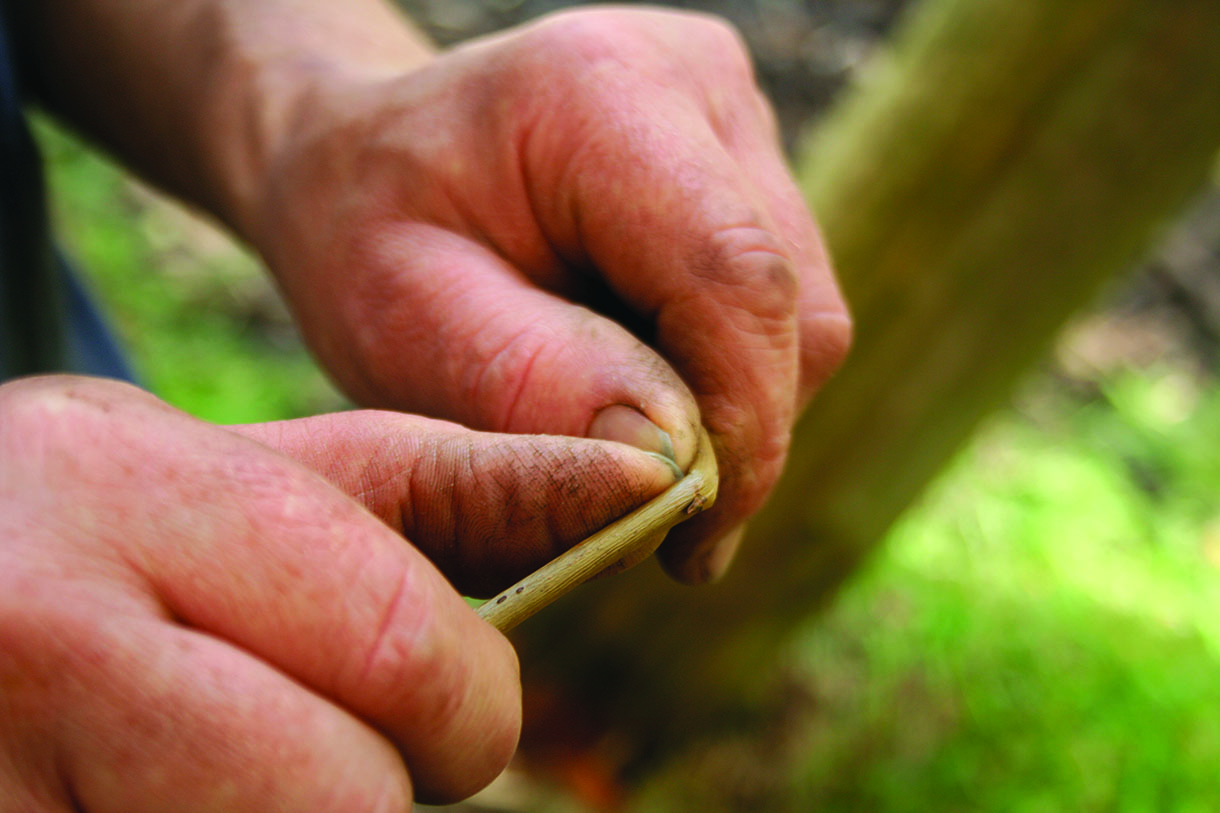
1. From the butt (larger) end, measure 150mm then kink the willow. Use your thumbs (as in the picture), which will enable you to kink the willow exactly where you want it
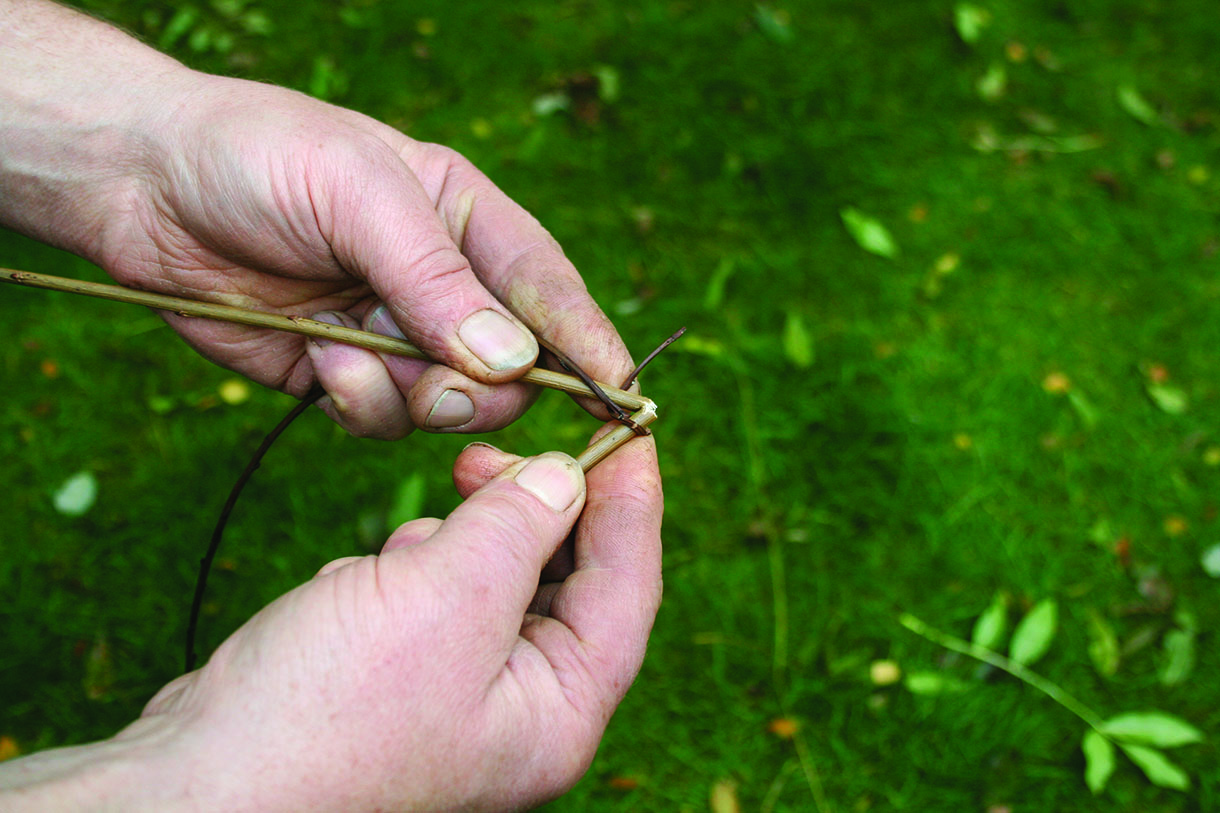
2. Use the shorter, smaller diameter rod of willow to start the weave. Starting with the tip (thin end), wrap the willow around the outside of the uprights. Use the inside of your finger (or thumb) to ‘push’ the willow around the uprights. This will give you a tight weave; if you just pull the willow around it will bend away from the uprights giving you a loose weave
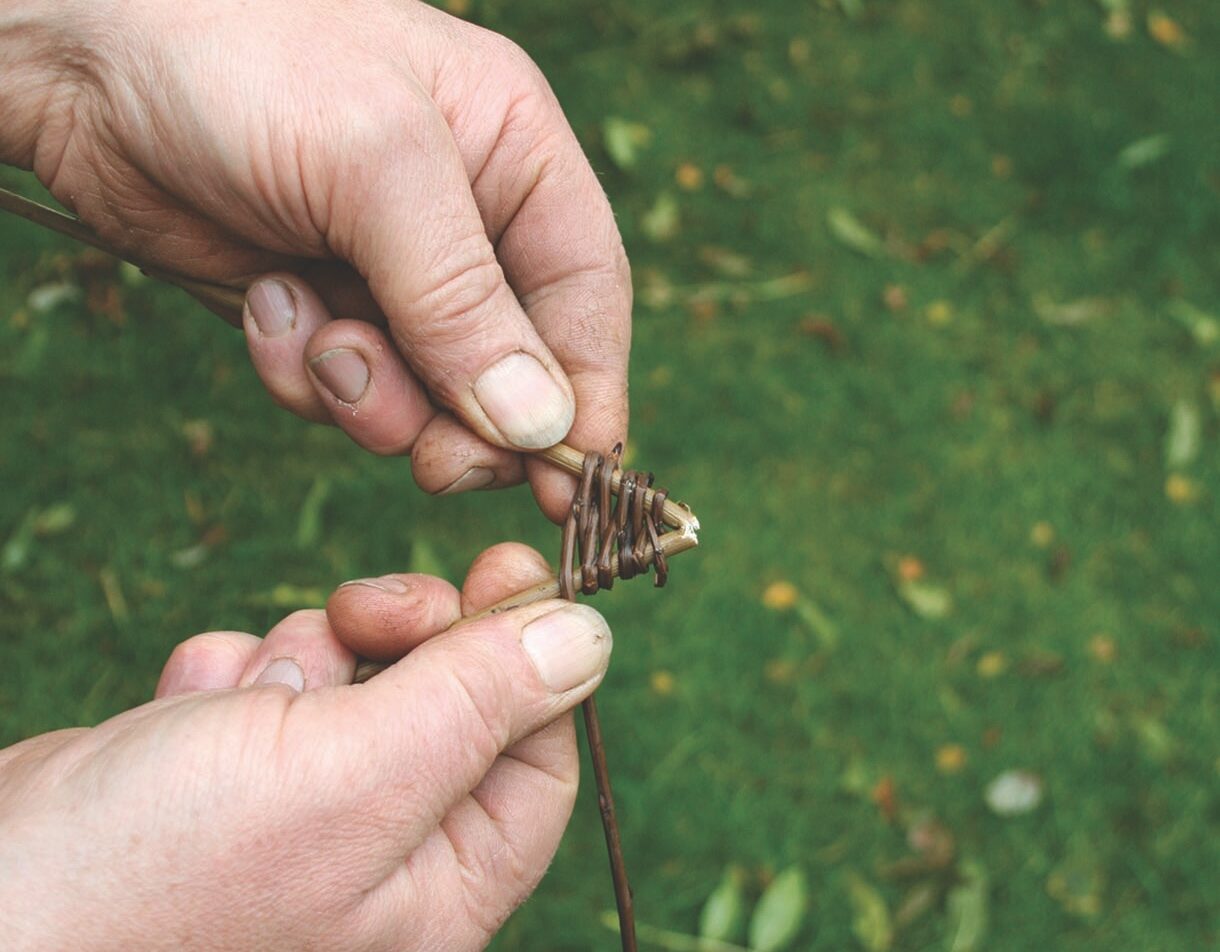
3. Next, pass the willow in-between the uprights and weave around the opposite upright. Continue with this for four or five turns
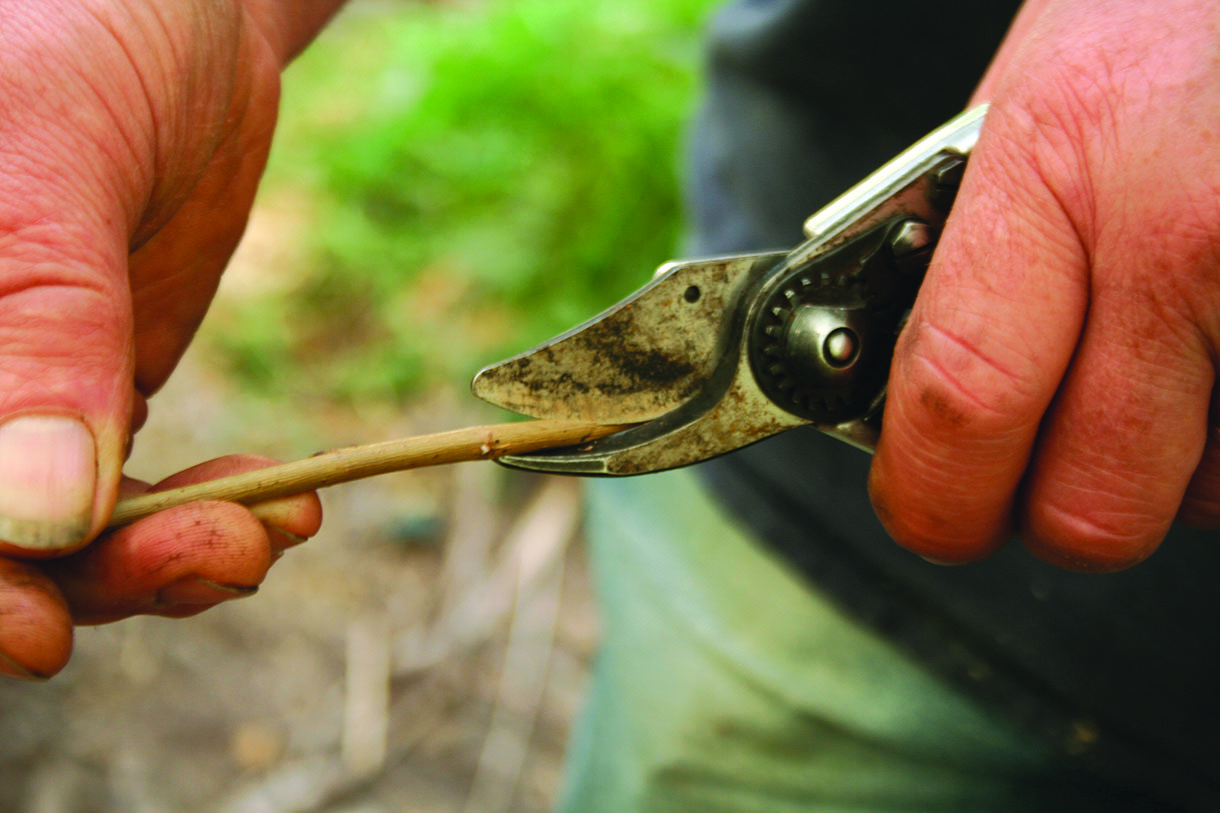
4. Cut the willow to convenient lengths. Use your secateurs to point a length of willow similar in size to your uprights
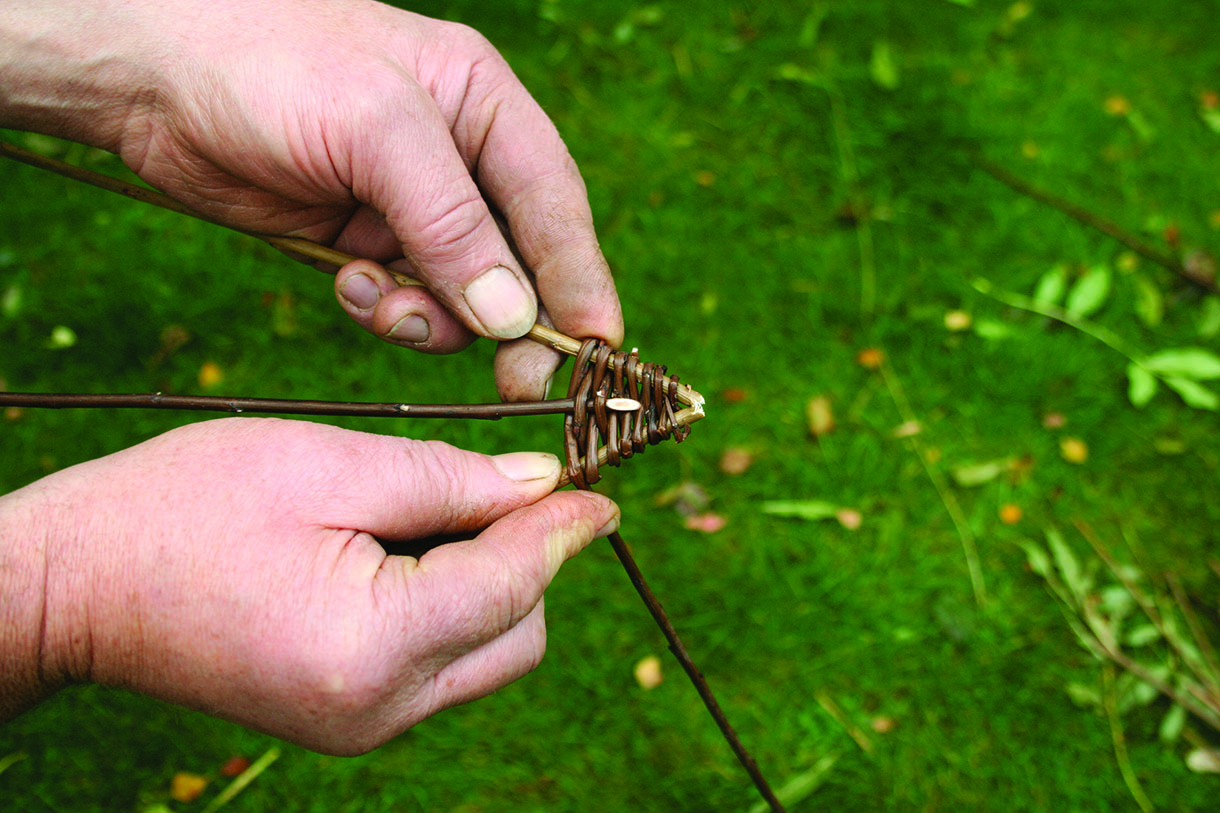
5. As the distance between the uprights increases, push your pointed rod into the weave. It’s easier if you point the end of the willow
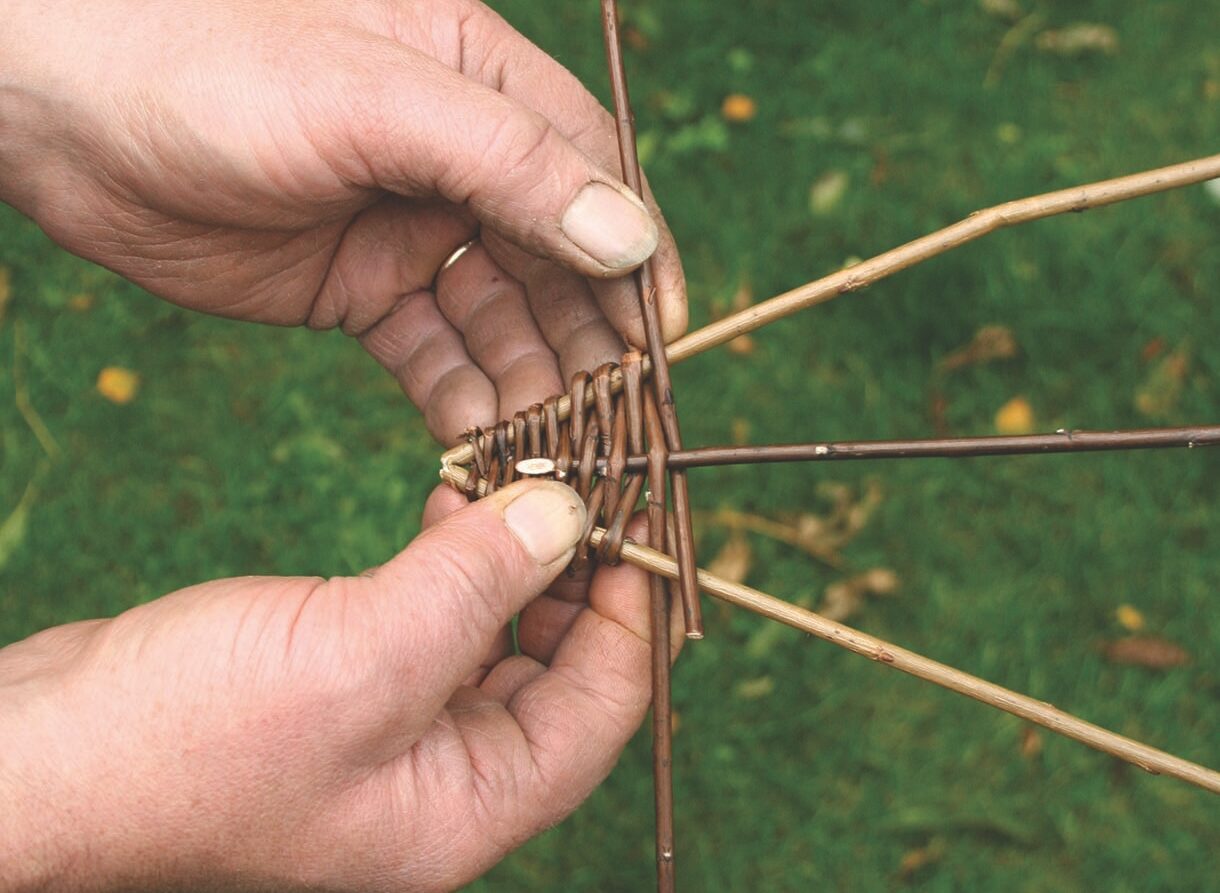
6. Continue weaving in and out until either you reach the end of the rod or the rod approaches the size of the upright. Add another rod, usually starting with the end you finished with (butt to butt, tip to tip). Extra willow can be trimmed off when you have finished
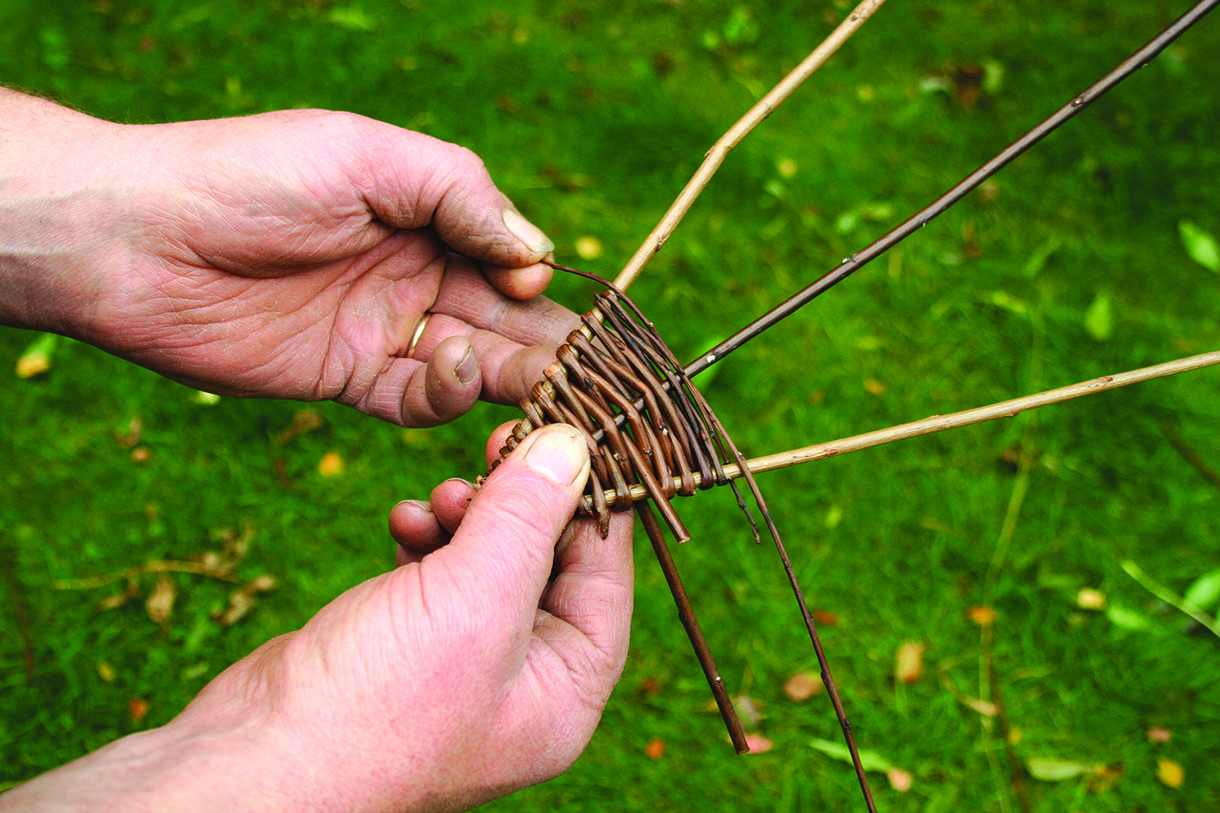
7. When you’ve woven enough willow into the tree you now want to trap the willow so it doesn’t unravel
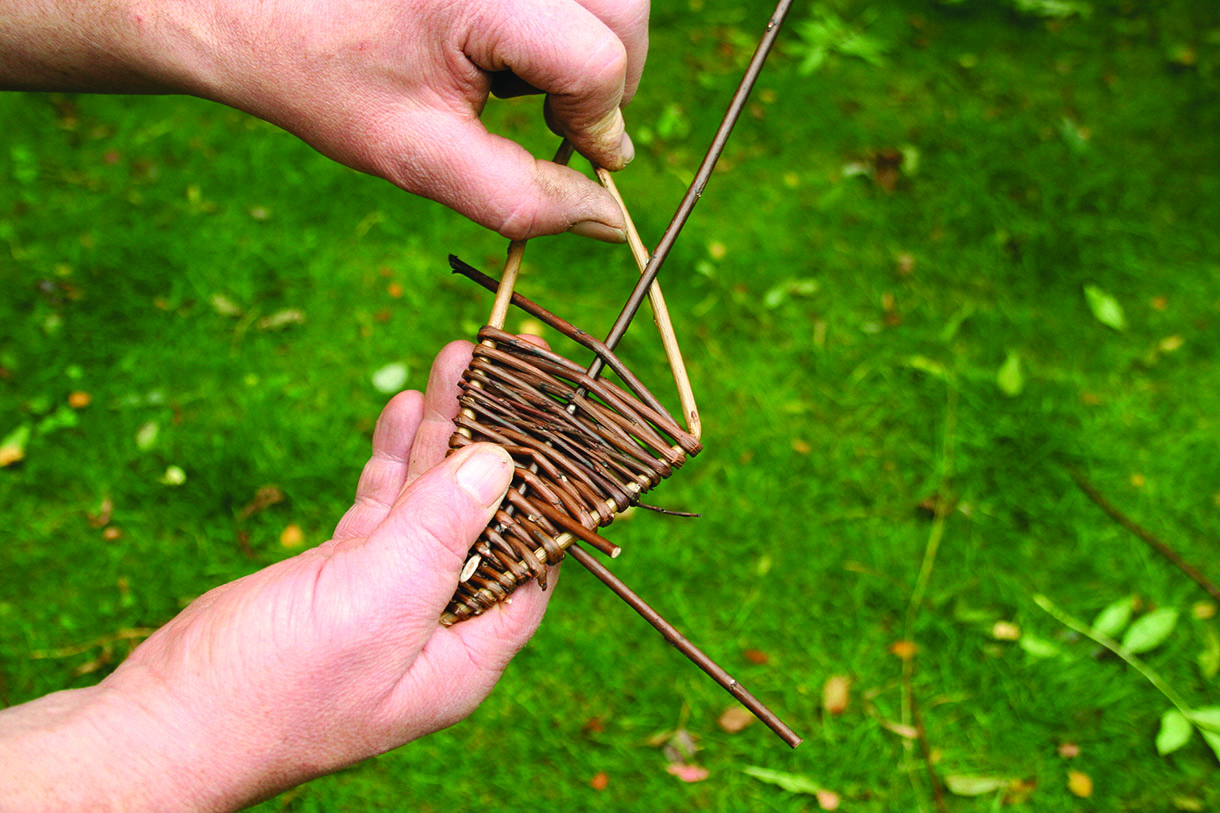
8. Kink one upright, fold the rod and kink again
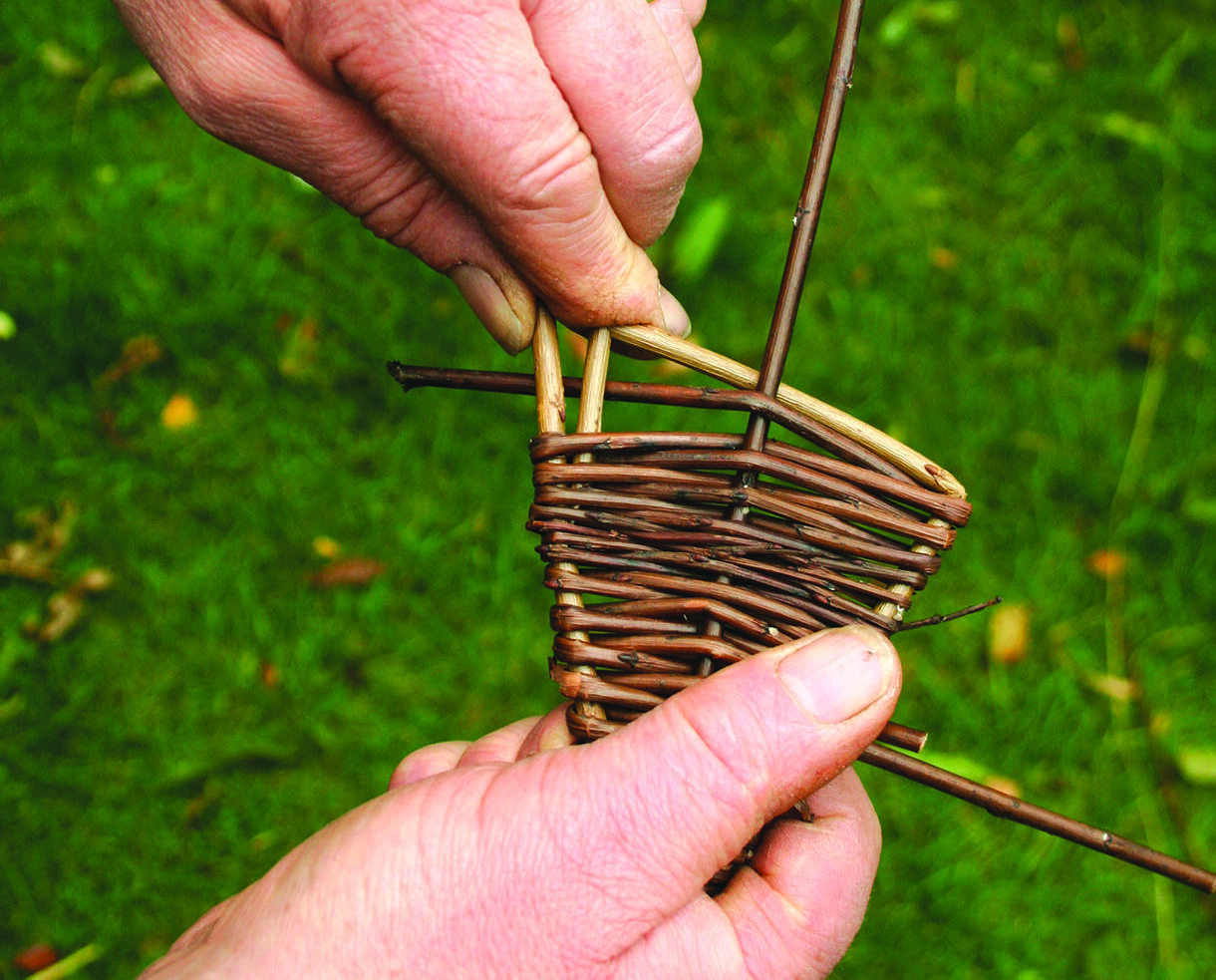
9. Snip the end into a point and push back into the weave, locking the willow in place
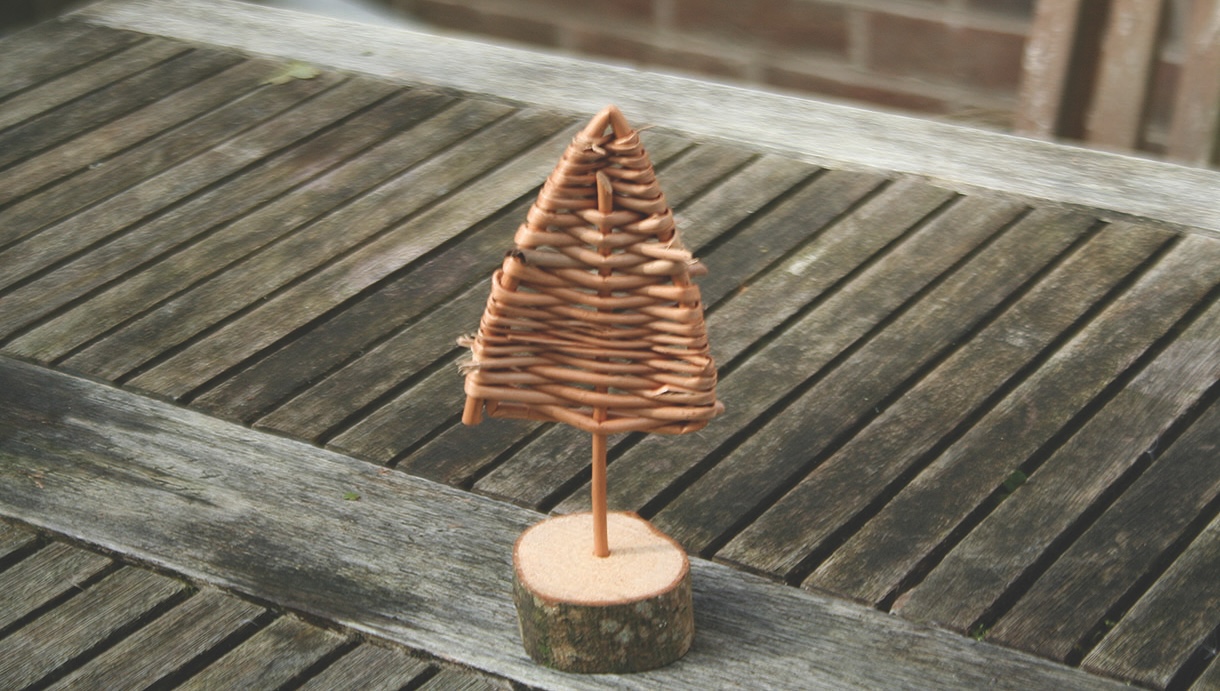
10. To finish, cut a short round of branch wood, drill a hole to match the central upright then glue the rod into the base. Here’s another tree but made from buff willow
Simple Christmas tree
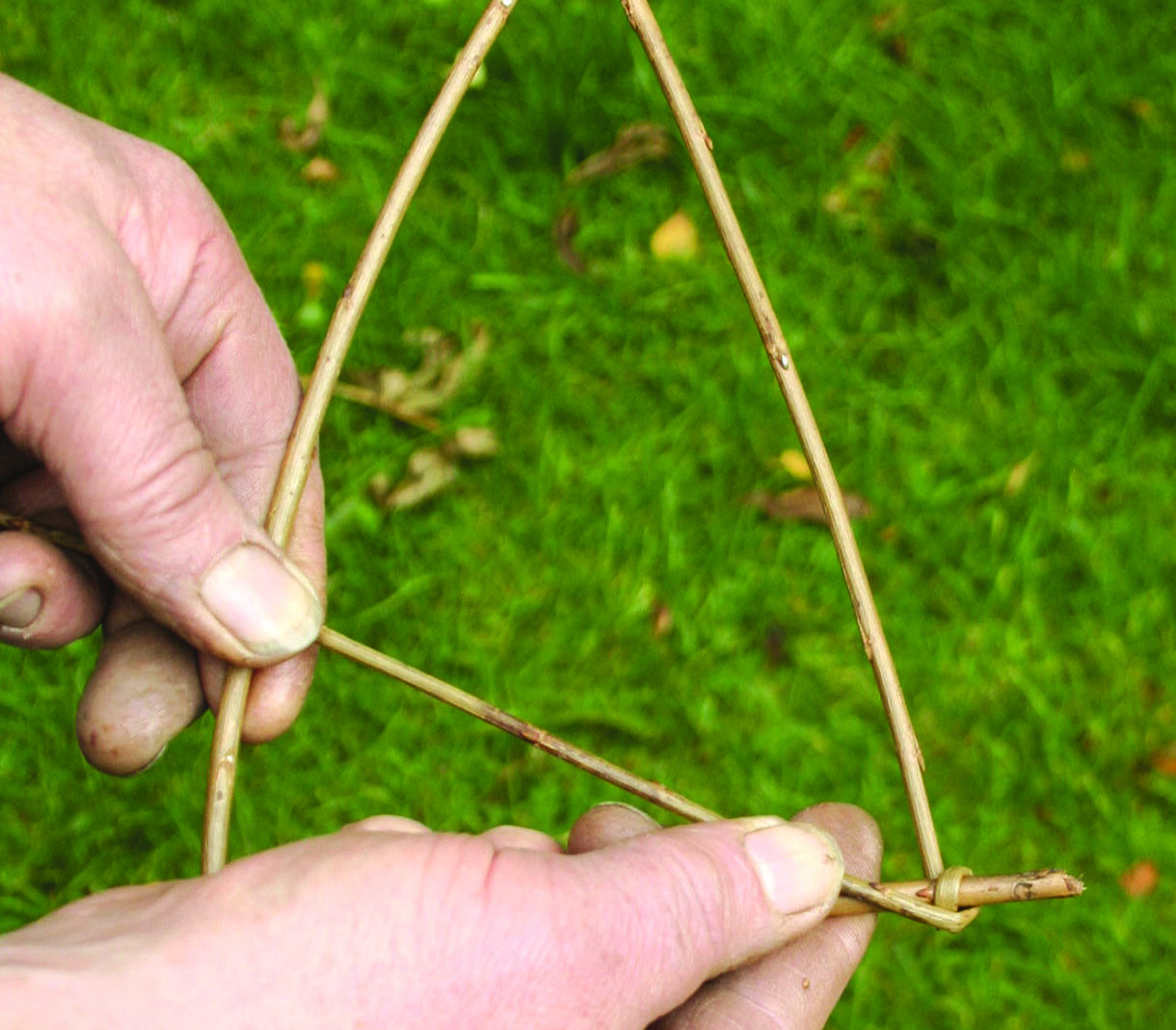
1. Here’s a second, simple Christmas tree; I’ve kinked the willow twice to form the tree shape. You can then
fix the shape by wrapping the rod around twice
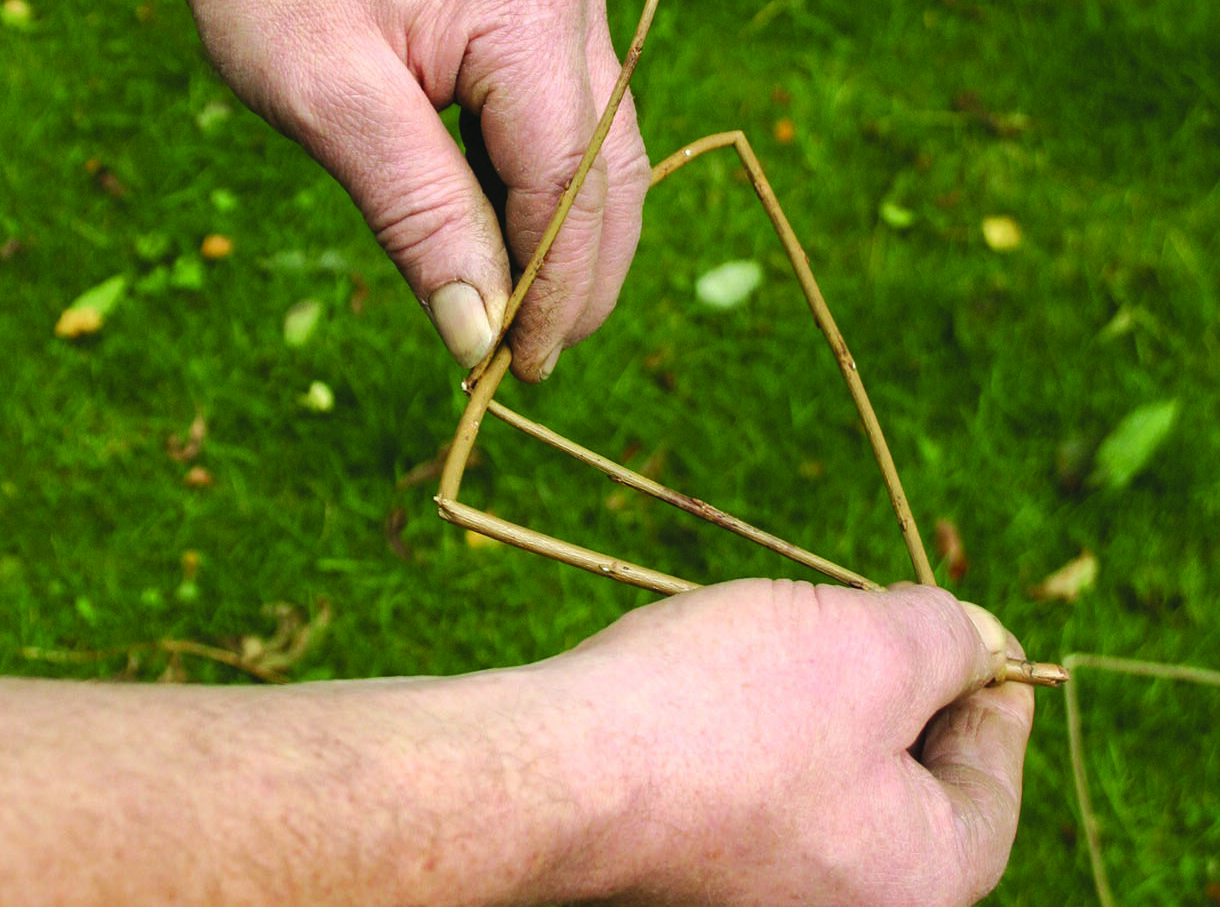
2. You can then thread the end of the willow through the tree shape. Make sure you wrap the willow tightly around the sides
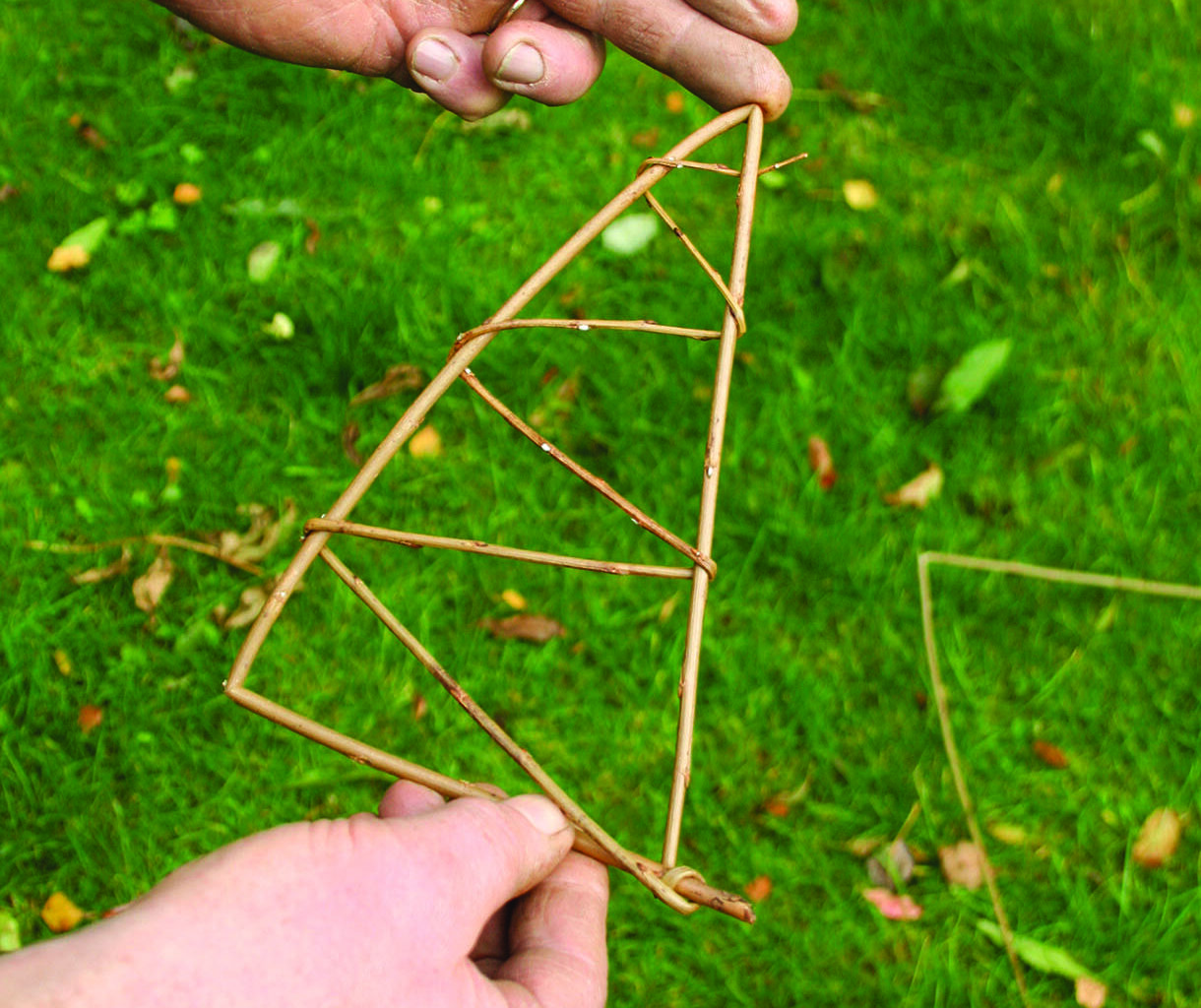
3. Thread this through criss-crossing, finishing with a tie at the top of the tree
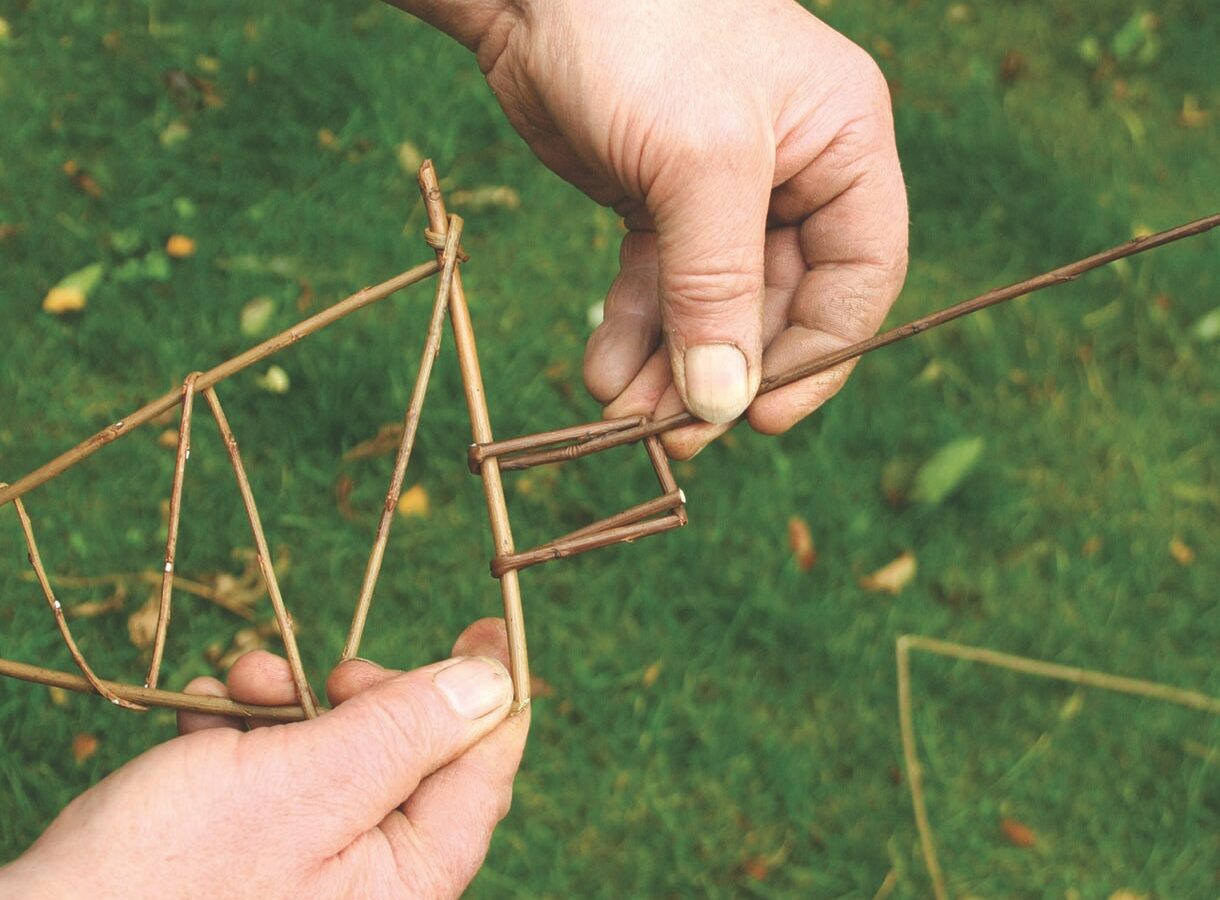
4. Now I’ve used a different willow to form the trunk. You can see here how I’ve fixed the butt end of the willow, wrapping it around the base of the tree, then kinking the willow twice before finally threading the tip through the trunk we’ve formed
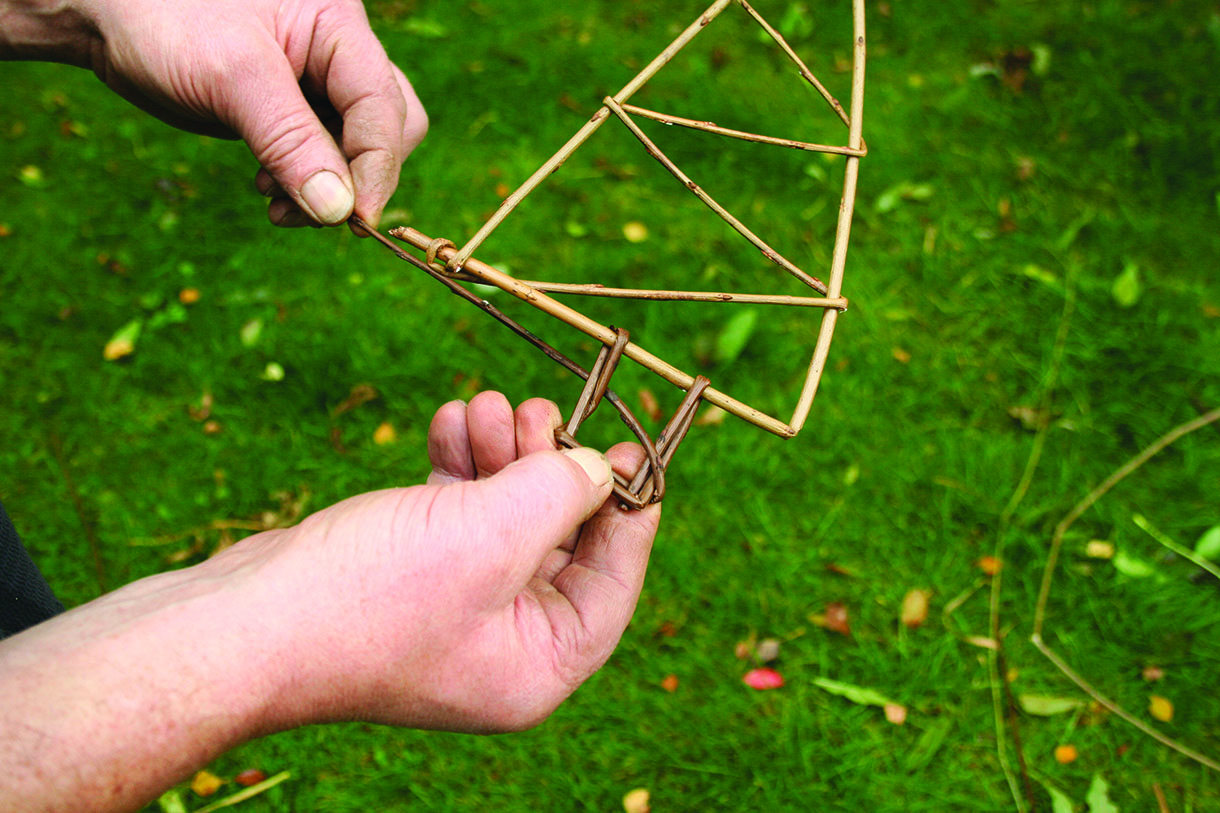
5. You can now weave the tip in and out using a figure-of-eight weave filling in the trunk
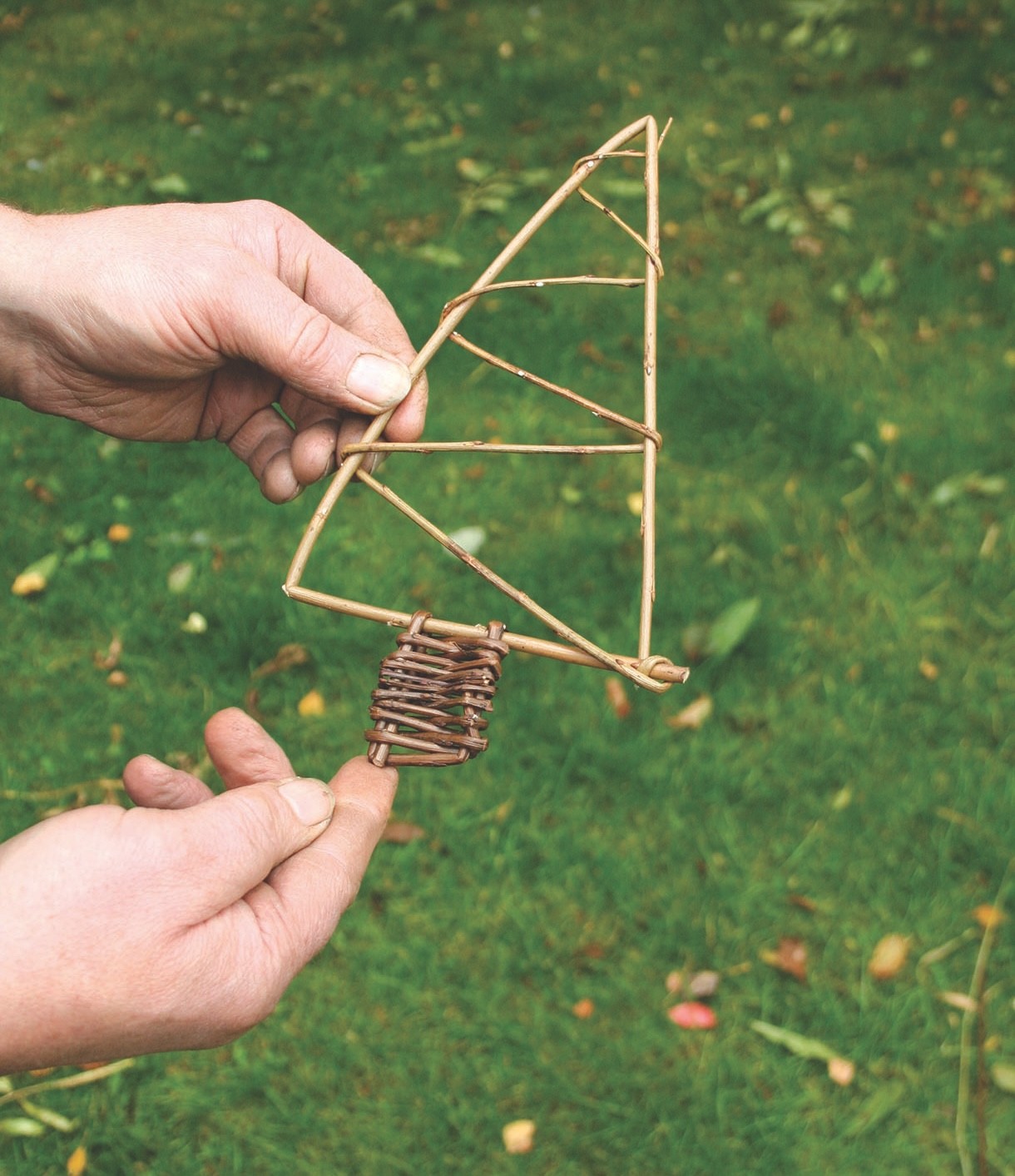
6. Finish off trimming the leftover willow. You could then add some suitable ribbon and either hang on your tree or window
A Christmas star
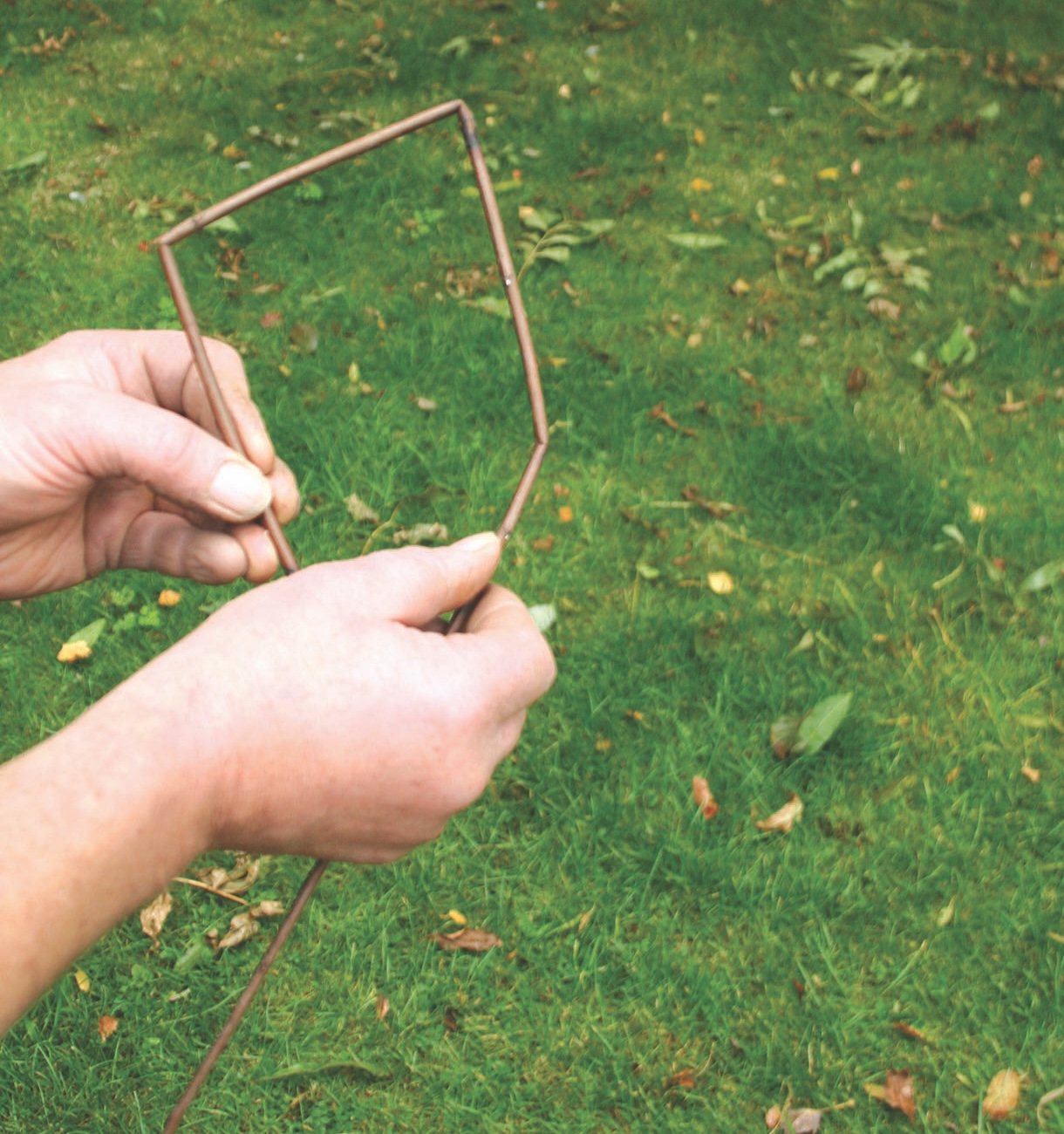
1. For a final flourish you could make a simple star, kink the willow four times starting from the base, try and make the ‘sections’ equal in length
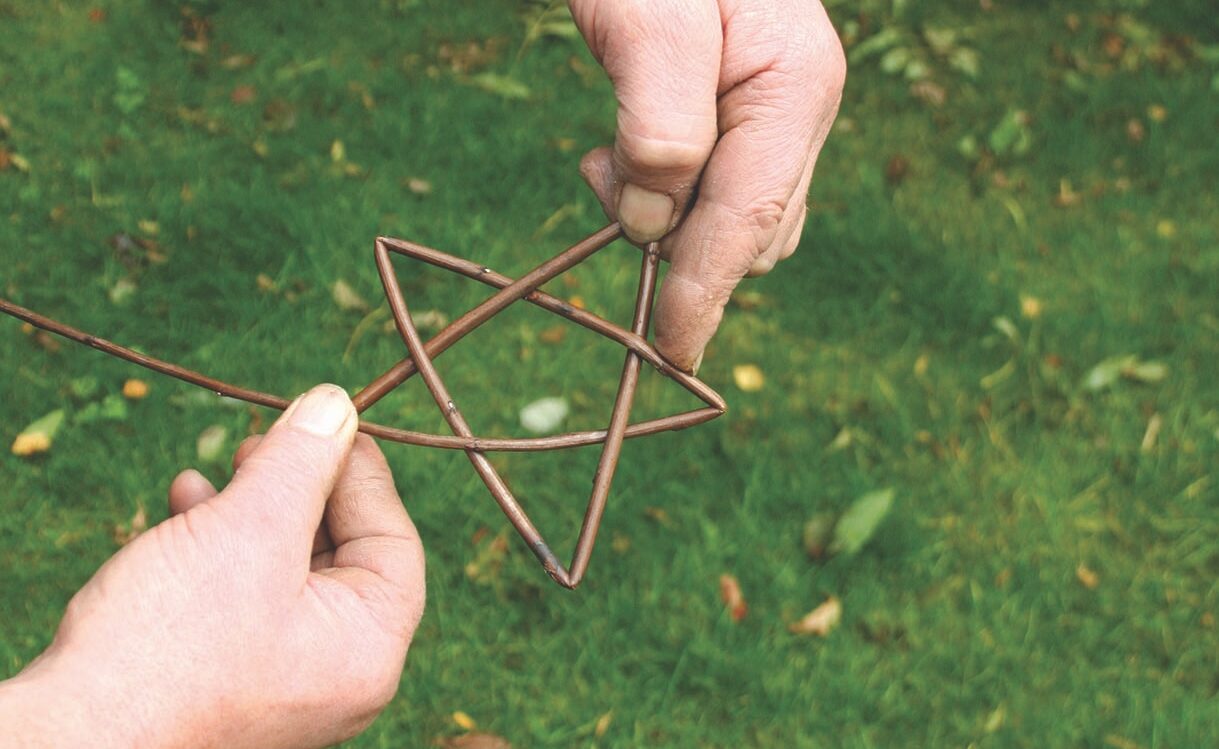
2. Now thread the willow through into a star shape; note how you weave the willow through ‘over and under’ the other rods of the star
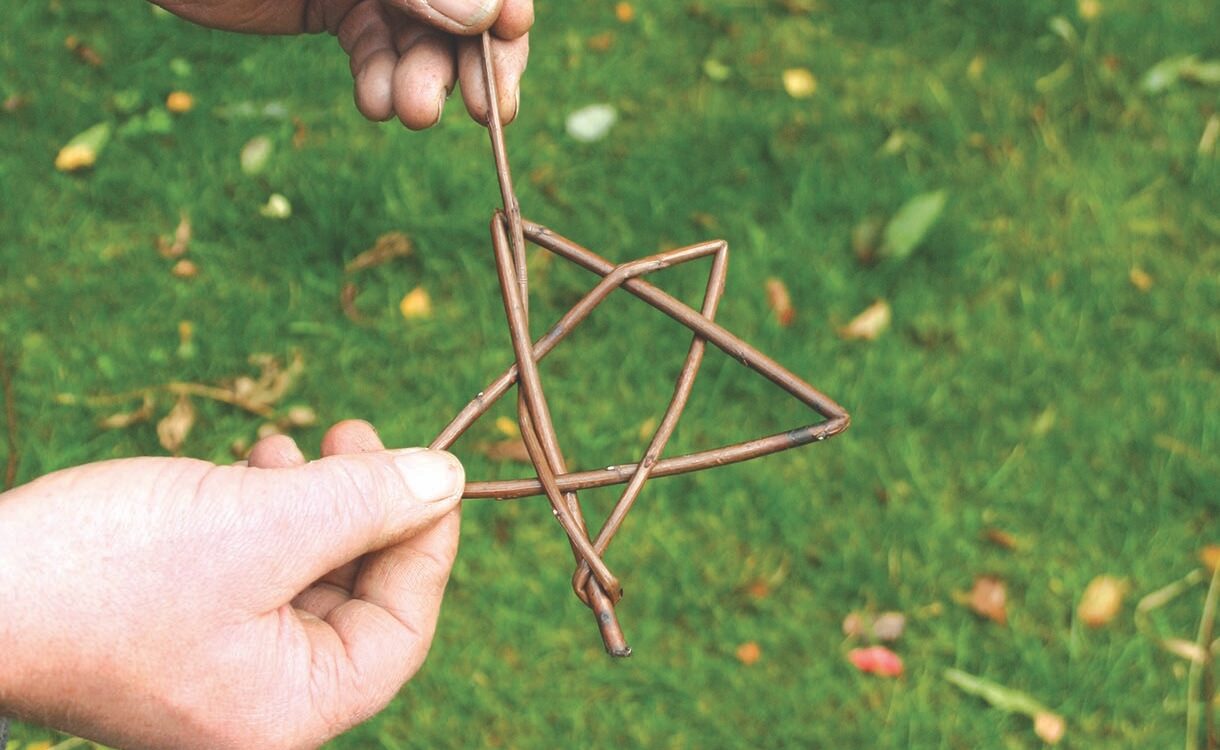
3. I like to finish the star by threading the rod back on itself until it locks, then trim off the excess willow
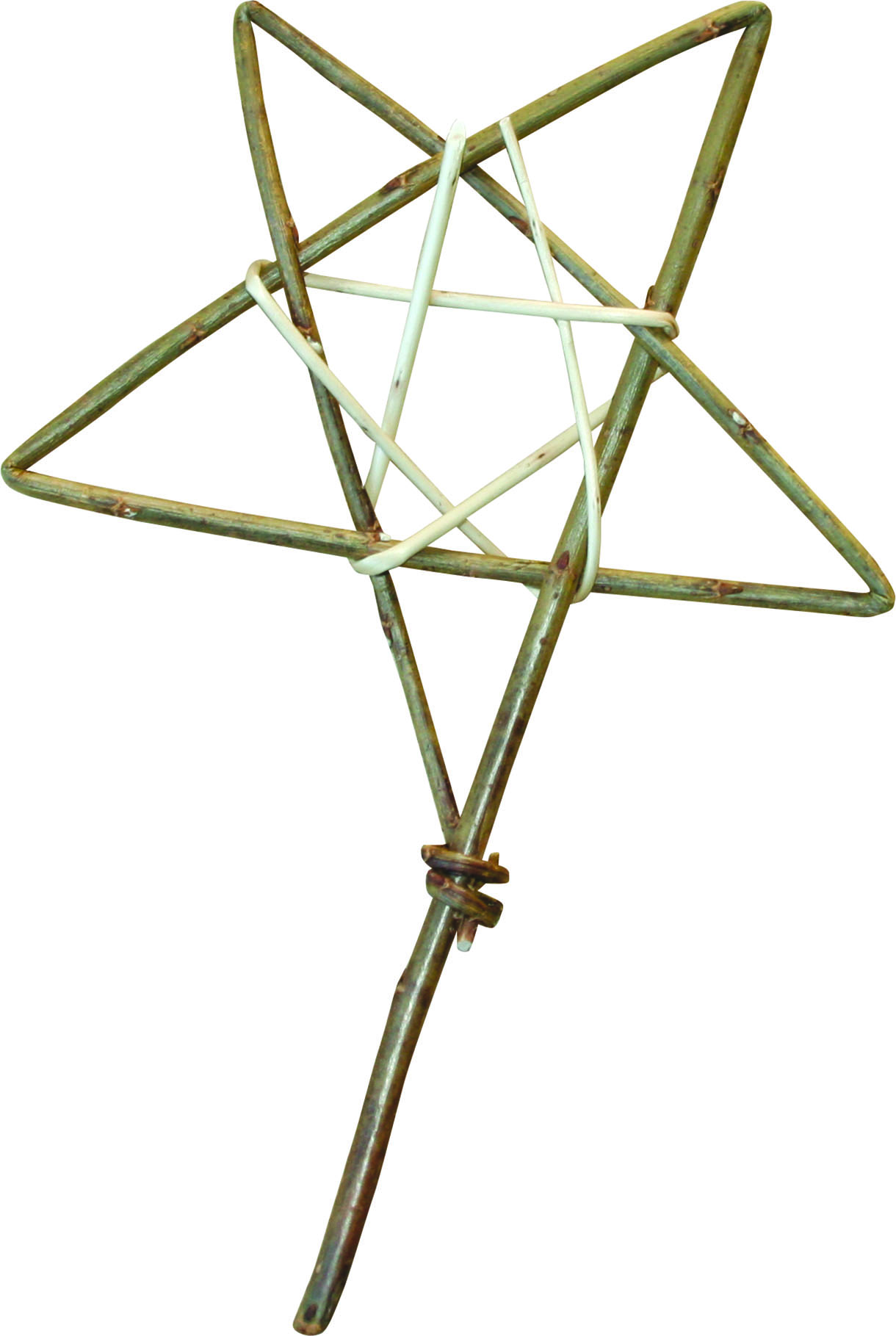
The finished star



